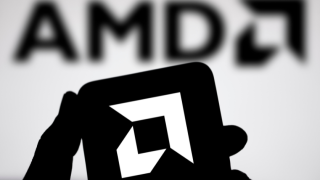The EMEA Satellite Operators Association (ESOA) represents 22 global and regional satellite operators, leading the charge in the development of satellite connectivity standards, regulatory governance and projects.
One thing that has been fairly evident as of late is that “satellite is fundamental for rural connectivity” says Aarti Holla-Maini, ESOA’s secretary general. The pandemic has put a needed spotlight on this critical infrastructure.
“At ESOA we really believe that connecting isolated, low-density rural areas has just been neglected for a long time in policymaking and it has actually taken the pandemic to bring the needed momentum to start tackling the digital divide with any kind of priority.”
She acknowledges that the digital divide is something we have been speaking about for years, but says it was never previously treated as the emergency that the pandemic has now shown to be, adding that “satellite in various incarnations is such an obvious solution to transforming rural areas and bringing people online within a short timeframe”.
Further, the role of satellite, the potential and the relevance of these rural areas has previously been considered marginal.
“I think that’s because the trendsetters in policy are typically the developed countries, and in those countries the rural areas probably represent a small overall percentage, so it’s seen as a marginal problem and therefore the benefit of connecting them is also considered marginal,” she explains.
Speaking of the developing countries, the commercial benefits of satellite also make it top of the list for the areas where fibre cannot reach “because it is a more economically accessible solution”, Holla-Maini says.
“When we look at our membership, we see them enabling meaningful connectivity on practically every continent, in both developed and emerging economies.”
Satellite can develop and unlock the potential of multiple 5G use cases and provide the levels of coverage and reliability that mobile networks require, enabling critical communications. Whether those networks are used for education, healthcare or small businesses “you cannot overstate the transformative power of this technology”, she says.
Time to market and cost barriers are also lessened as the “big investment in satellites has already been done”. As a result, a number of community Wifi projects in previously unconnected places such as Mexico are already being rolled out.
Aside from connecting individuals, one of ESOA’s members is connecting 245 schools in Kenya delivering maths, literacy and life skills classes, focussing on marginalised girls.
Probably the biggest shift that has occurred is the relationship between telcos and satellite operators. Historically, one saw “telcos as the customers of satellite operators but that relationship is changing. We see it shifting from a supplier relationship more towards a partnership,” says Holla-Maini.
Further, the terrestrial sector is investing in satellite with considerable the momentum, which is also very telling.
“The first priority is the need for a seamless connectivity experience that characterises so many of the verticals and applications of tomorrow’s telecoms ecosystem,” she explains.
This includes everything from connected transport, mobile healthcare and global asset tracking to software updates for critical cybersecurity and devices.
“The second factor is the need for mobile operators to drive growth,” she says. “They need to find new subscribers, which means finding a way to connect those who aren’t already subscribers and aren’t already connected, and satellite is an obvious part of that solution.”
The third factor, she says, is the evolution in our sector in satellite technology. “On the one hand, you have increasing capabilities of evolving technology solutions, in both the space and the ground segments, but we also have the progress being made on the technical side to develop standards around non-terrestrial networks within 3GPP.”
These standards, she says, will make it a lot easier to integrate satellite and terrestrial networks into the network of networks.
On whether or not we will see increased consolidation, with satellite companies and telcos eventually joining up to create more end-to-end businesses, Holla-Maini expects to see merged companies and specialist operators.
“The scale of the need for connectivity around the world is so diverse and so big that there is going to be room for standalone satellite operators that look like hybrids because maybe they are satellite companies but they have a huge terrestrial investment.”
She describes the association’s work as very diverse. “What we do is high-level advocacy to foster the most favourable political, industrial and regulatory environments and frameworks globally for satellite operators,” she explains.
This boils down to ensuring that satellite is considered and included in different digital or space policies and regulation, as well as in any guidelines that are given to governments on how to connect various populations.
“Our mission in this space is really to support the ease-of-use of satellite technology so that we can grow its role in an evolving telecoms ecosystem and help unlock new markets.”






